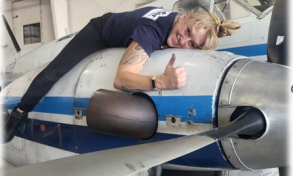For many industries, the integration of technology and digitization have brought countless advantages. But with an increased use of technology, there is also an increased risk of something going wrong. If you don’t have the right security measures in place, hackers can easily access your information. It’s important to have your data properly encrypted, and this is especially true in the aviation industry. From schedules and itineraries to ground transportation information and personal information: their protection all falls under aviation cybersecurity. There are, however, challenges for cybersecurity in an industry as vast as aviation.
What is Cybersecurity?
Cybersecurity is the act of defending any sort of technology from a digital attack. This can include:
- Computers
- Servers
- Mobile devices
- Electronic systems
- Networks
- Data
As the world becomes more and more digitized, the chances of suffering from some sort of digital attack increases. It seems like every time you turn on the news lately, there is mention of the newest ransomware attack or data breach.
Types of Cyberattacks
Any time a computer or server is attacked by hackers, it is a cyberattack. Two of the most popular types of cyberattacks are known as ransomware and a data breech/ data leak.
Ransomware
Ransomware attacks happen when hackers threaten to publish sensitive data or permanently block access to it until a set ransom is paid. Ransomware attacks can affect not only companies but even the masses. One of the most notable recent ransomware attacks happened to Colonial Pipeline in May, causing massive gas shortages across the United States.
Data Breach
Another common type of cyber attack is a data breach or data leak. This is when confidential or sensitive information is exposed and shared without permission. A popular example of this is when personal information such as names and phone numbers from Facebook were exposed to the public internet in 2019. If you are ever contacted by a company saying there has been a breach of their data, there are websites you can use to check to see if your information has been compromised.
Cybersecurity in the Aviation Industry
Just like Facebook or Colonial Pipeline, the aviation industry is at risk for cyber-attacks. However, the cybersecurity risk is a relatively new challenge for aviation. Because most planes are older than you think- averaging around 11 years old– they don’t have the same technologies as the newer planes that are being developed. Because they aren’t as state-of-the-art, they have analog and legacy systems that are harder to hack. The main threat to analog systems is actual physical tampering, and legacy systems usually have very limited connectivity.
However, just like the rest of the world, the aviation industry is digitizing, which has its pros and cons.
Pros
The increased use of technology in the aviation industry will allow them to tackle some of the current challenges they are facing. There is the potential for more efficient flight planning when everything is digital. Additionally, one of the biggest challenges in the industry is fuel. Not only is the aviation industry trying to reduce their emissions and fuel consumption, but more sustainable fuels are also in the works. The digital age can also help with the job and safety training of employees.
Cons
Unfortunately, all these pros come with a cost. E-enabled aircraft are turning airplanes into flying data centers. With aircraft becoming fully digital, everything is becoming more connected. This means that there are more doors opening for potential hackers. Because of an increased use of commercial off-the-shelf (COTS) software that is no longer aviation specific, it makes it easier for hackers to gain access. They do not need aviation-specific knowledge to attack systems that are very similar to ones used in other industries.
The Vastness of the Aviation Industry
Because there are so many different systems that need protection, it can be hard to cover all the bases. Not only is there an increased amount of technology and digitization on airplanes, but also in airports. Gone are the days of paper tickets, now everything can be accessed on a passenger’s cellphone.
Because there are so many systems and more modern technology is taking over, personnel are not sufficiently equipped to deal with these new challenges. As time goes on and better security measures are put in place and employees of both airports and airlines gain the necessary training and experience, they will be at less of a risk for cyberattack. Unfortunately, like every other industry, no matter what security is put in place, there will always be a chance of attack.
Technology in Aviation
With all the new technology being implemented in aviation, there are those that need to make sure the systems are working. Aviation Maintenance Technicians are the ones behind the scenes, making sure the electronics- among other systems- are in working order on planes. If you’d like to learn more about what AMTs do, contact NCI today!










